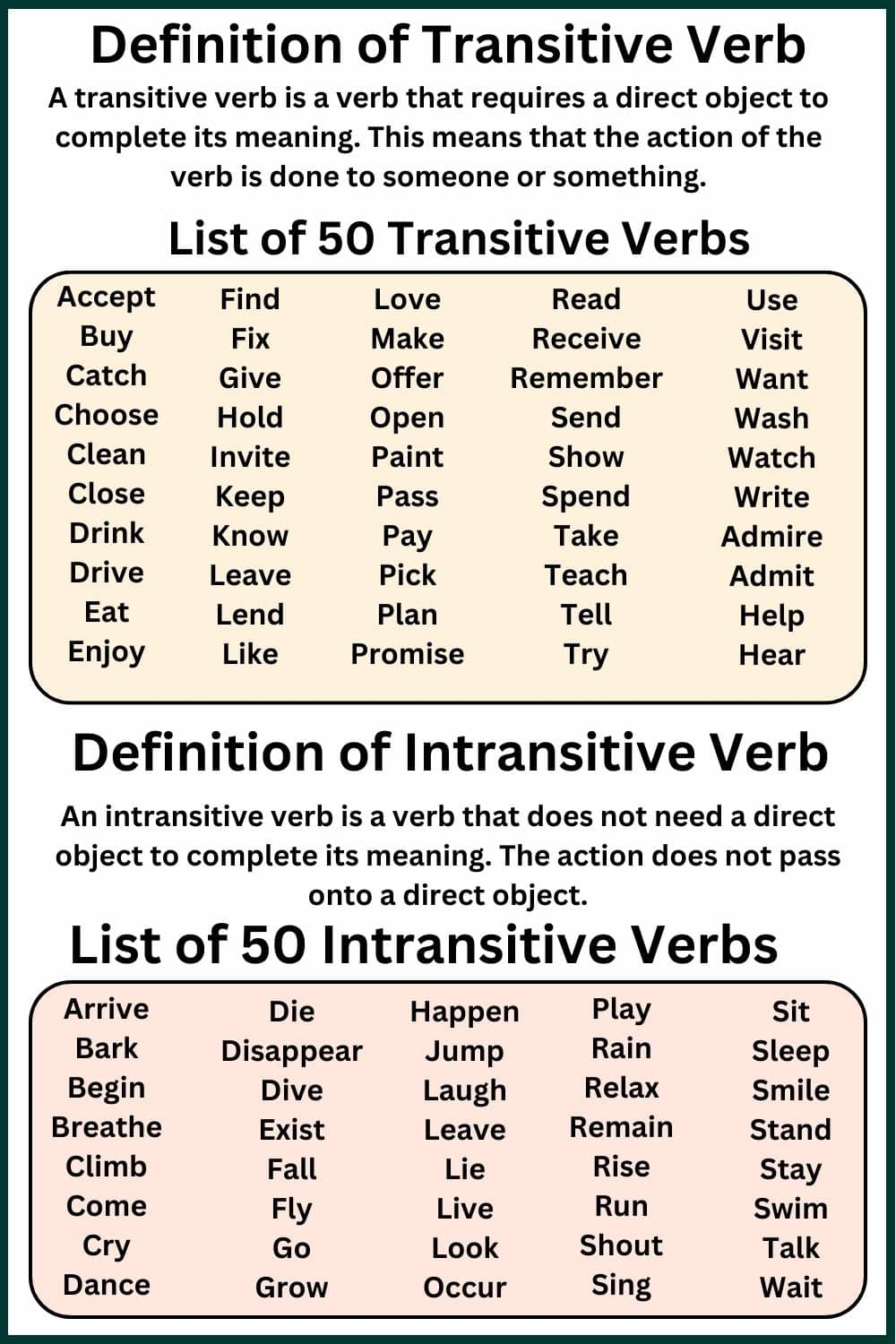Verbs play a crucial role in forming sentences and expressing actions. Understanding the difference between transitive and intransitive verbs is essential for creating clear and meaningful sentences. In English grammar, verbs are classified into two main categories: transitive and intransitive.
Transitive verbs require a direct object to complete their meaning, while intransitive verbs do not require a direct object. This distinction is important in sentence structure and comprehension.
Verbs Transitive and Intransitive
Transitive verbs are action verbs that are followed by a direct object, which receives the action of the verb. For example, in the sentence “She ate an apple,” the verb “ate” is transitive because it is followed by the direct object “an apple.” The action of eating is directed towards the apple, making it a transitive verb.
In contrast, intransitive verbs do not require a direct object to complete their meaning. These verbs express actions that do not transfer to a direct object. For example, in the sentence “He sleeps peacefully,” the verb “sleeps” is intransitive because it does not require a direct object. The action of sleeping is complete on its own without the need for a direct object.
Some verbs can be both transitive and intransitive, depending on how they are used in a sentence. For example, the verb “run” can be transitive when followed by a direct object, as in “She runs a marathon,” or intransitive when used without a direct object, as in “He runs every morning.” The context of the sentence determines whether the verb is transitive or intransitive.
It is essential to pay attention to the direct objects in a sentence to identify transitive verbs. Direct objects answer the question “what” or “whom” after a transitive verb. Understanding the distinction between transitive and intransitive verbs can help improve sentence structure and clarity in writing.
In conclusion, transitive verbs require a direct object to complete their meaning, while intransitive verbs do not. Both types of verbs play a crucial role in forming sentences and expressing actions. By recognizing the difference between transitive and intransitive verbs, one can enhance their writing skills and create more effective communication.
